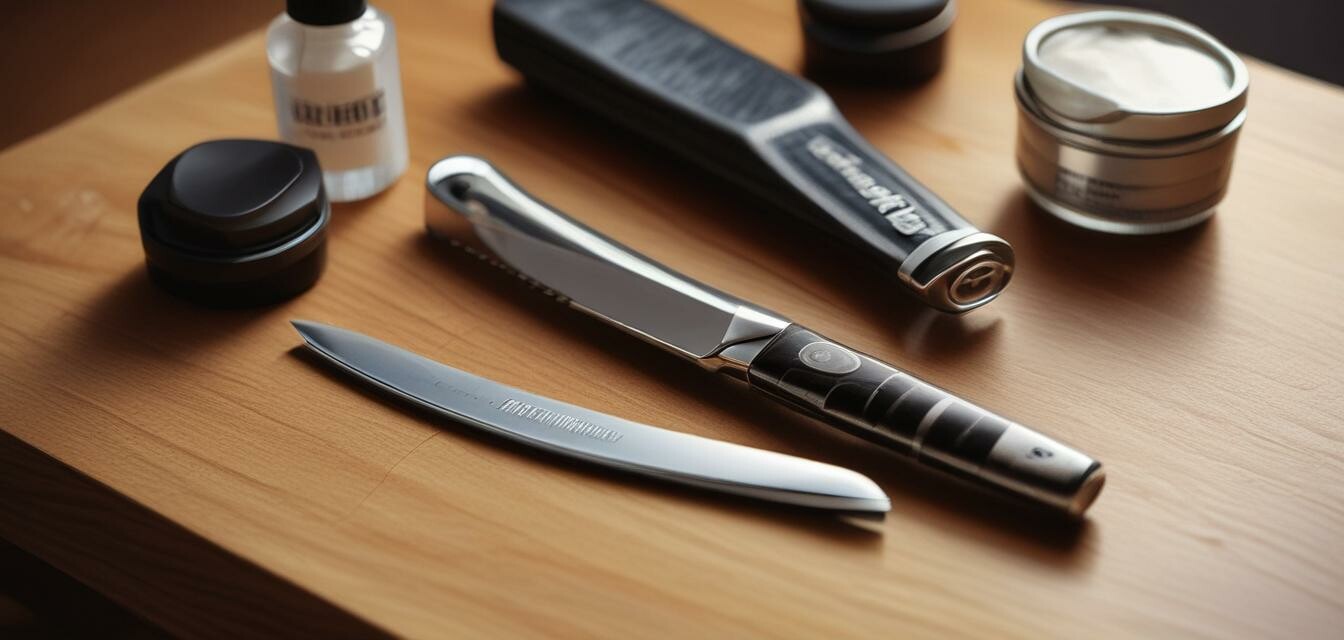
Mastering the Art of the Straight Razor
Welcome to your comprehensive guide on using a straight razor! This article will provide you with beginner-friendly techniques, safety tips, and suggestions for the best products to elevate your shaving experience. Whether you're looking to refine your grooming routine or achieve that classic, clean look, this guide has you covered.
Key Takeaways
- Mastering a straight razor requires practice patient to develop your technique.
- Safety is paramount; always use caution and the right tools to prevent accidents.
- Choosing quality products can enhance your shaving experience.
- Regular maintenance of your razor is essential for optimal performance.
- Don’t forget to incorporate skincare before and after your shave.
Understanding the Straight Razor
A straight razor, often considered the pinnacle of grooming tools, offers a traditional and rewarding shaving experience. Understanding its components and how each part works is an important first step.
Components of a straight razor
| Component | Description |
|---|---|
| Blade | The sharp part that cuts hair, typically made from high-carbon steel or stainless steel. |
| Handle | Provides grip and control; often made from wood, plastic, or synthetic materials. |
| Pivot Point | The point where the blade meets the handle, allowing the blade to open and close. |
Essential Techniques for Shaving
Using a straight razor requires a specific technique to ensure a close and safe shave. Here’s how to get started:
Preparation
- Prepare your skin with warm water to soften hair and open pores.
- Consider using a pre-shave oil or cream for better glide.
- Apply a rich shaving cream to create a protective layer.
Shaving Technique
- Hold the razor at a 30-degree angle against your skin.
- Use slow and short strokes, always shaving with the grain.
- Rinse the blade frequently to remove hair and cream buildup.
- Use gentle pressure; let the weight of the razor do the work.
Safety Tips for Beginners
Using a straight razor can feel intimidating, but keeping safety in mind will set you up for success:
- Always use a sharp blade; a dull blade increases the risk of nicks.
- Maintain a stable grip and avoid rushing the shave.
- Shave in well-lit areas to ensure visibility.
- Be cautious around sensitive areas, such as the neck and jawline.
Post-Shave Care
After your shave, it’s essential to care for your skin and equipment:
Skincare Routine
- Rinse your face with cool water to close pores.
- Apply an alcohol-free aftershave to soothe and moisturize the skin.
- Consider a moisturizer to keep your skin hydrated.
Razor Maintenance
To keep your straight razor in top condition, perform the following:
- Clean the blade thoroughly after each use.
- Regularly hone your razor to maintain a sharp edge.
- Strop your razor before each use to align and smooth the blade.
Recommended Products
Choosing the right products can significantly enhance your shaving experience. Consider exploring our categories for:
- Shaving creams and gels for a rich lather.
- Skincare essentials for post-shave care.
- Grooming kits for all-inclusive shaving solutions.
Pros
- Provides a close and precise shave.
- Traditional and stylish grooming tool.
- Durable and can last a lifetime with proper care.
Cons
- Requires practice to master techniques.
- Initial cost can be higher than disposable razors.
- Risk of nicks and cuts for beginners.
Conclusion
Mastering the straight razor is a journey, not a destination. With the right techniques, safety practices, and commitment to learning, you can elevate your grooming game while enjoying the tradition of straight shaving. Remember to regularly visit our Tips & Advice section for more helpful insights and routines to enhance your personal care regime.
